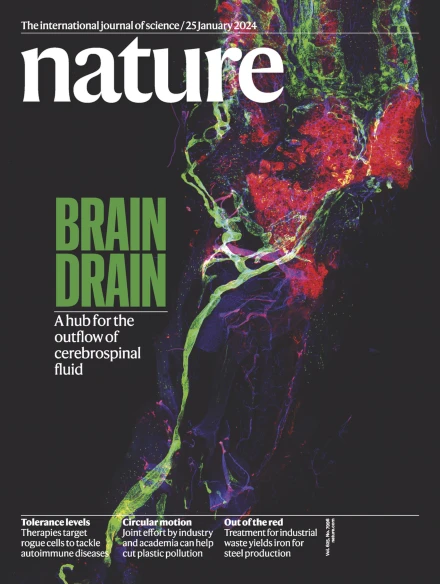Preparation of a neutral nitrogen allotrope hexanitrogen C2h-N6
IF 50.5
1区 综合性期刊
Q1 MULTIDISCIPLINARY SCIENCES
引用次数: 0
Abstract
Compounds consisting only of the element nitrogen (polynitrogens or nitrogen allotropes) are considered promising clean energy-storage materials owing to their immense energy content that is much higher than hydrogen, ammonia or hydrazine, which are in common use, and because they release only harmless nitrogen on decomposition1. However, their extreme instability poses a substantial synthetic challenge and no neutral molecular nitrogen allotrope beyond N2 has been isolated2,3. Here we present the room-temperature preparation of molecular N6 (hexanitrogen) through the gas-phase reaction of chlorine or bromine with silver azide, followed by trapping in argon matrices at 10 K. We also prepared neat N6 as a film at liquid nitrogen temperature (77 K), further indicating its stability. Infrared and ultraviolet–visible (UV-Vis) spectroscopy, 15N-isotope labelling and ab initio computations firmly support our findings. The preparation of a metastable molecular nitrogen allotrope beyond N2 contributes to our fundamental scientific knowledge and possibly opens new opportunities for future energy-storage concepts. The facile synthesis and spectroscopic identification of previously unreported hexanitrogen C2h-N6 is described, representing experimentally realized neutral molecular nitrogen allotropes beyond N2 that exhibit unexpected stability.

中性氮同素异形体C2h-N6的制备
仅由氮元素组成的化合物(多氮或氮同素异素)被认为是有前途的清洁储能材料,因为它们的巨大能量含量远远高于常用的氢、氨或肼,而且它们在分解时只释放无害的氮1。然而,它们的极端不稳定性给合成带来了巨大的挑战,除了N2之外,没有分离出中性分子氮同素异形体2,3。本文介绍了通过氯或溴与叠氮化银的气相反应在室温下制备分子N6(六氮),然后在10 K时将其捕获在氩气基质中。我们还在液氮温度(77 K)下制备了整齐的N6薄膜,进一步证明了其稳定性。红外和紫外-可见光谱、15n同位素标记和从头计算都有力地支持了我们的发现。亚稳态分子氮同素异形体的制备有助于我们的基础科学知识,并可能为未来的储能概念开辟新的机会。描述了先前未报道的六氮C2h-N6的简单合成和光谱鉴定,代表了实验实现的中性分子氮同素异形体,超出N2,表现出意想不到的稳定性。
本文章由计算机程序翻译,如有差异,请以英文原文为准。
求助全文
约1分钟内获得全文
求助全文
来源期刊

Nature
综合性期刊-综合性期刊
CiteScore
90.00
自引率
1.20%
发文量
3652
审稿时长
3 months
期刊介绍:
Nature is a prestigious international journal that publishes peer-reviewed research in various scientific and technological fields. The selection of articles is based on criteria such as originality, importance, interdisciplinary relevance, timeliness, accessibility, elegance, and surprising conclusions. In addition to showcasing significant scientific advances, Nature delivers rapid, authoritative, insightful news, and interpretation of current and upcoming trends impacting science, scientists, and the broader public. The journal serves a dual purpose: firstly, to promptly share noteworthy scientific advances and foster discussions among scientists, and secondly, to ensure the swift dissemination of scientific results globally, emphasizing their significance for knowledge, culture, and daily life.
 求助内容:
求助内容: 应助结果提醒方式:
应助结果提醒方式:


